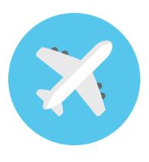 In this course, you will learn the basic information, principles, and technical procedures required to perform the duties of an aircraft maintenance technician.
In this course, you will learn the basic information, principles, and technical procedures required to perform the duties of an aircraft maintenance technician.
Read and understand technical instructions, safety protocols, and maintenance procedures.
Keep written logs and records of maintenance and repairs.
Discuss your responsibilities and communicate with colleagues.

